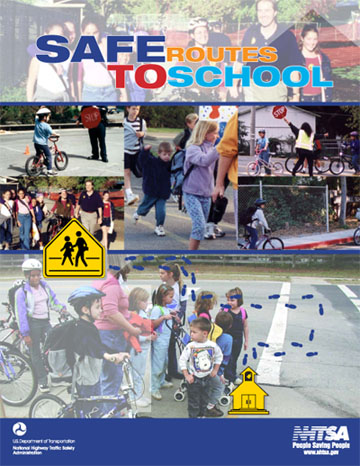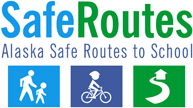About the SRTS Program

Safe Routes to School is an international movement designed to reach communities. The goal, simply stated, is to increase the number of children safely walking and biking to school. The movement began in Europe and has spread to the U.S. as a means to encourage and enable children to walk and bike to school safely.
Many of us remember a time when walking and bicycling to school was a part of everyday life. Today, however, the story is very different.
In 1969:
In 2009:
This decline in walking and bicycling has had an adverse effect on traffic congestion and air quality around schools, as well as pedestrian and bicycle safety. In addition, a growing body of evidence has shown that children who lead sedentary lifestyles are at risk for a variety of health problems such as obesity, diabetes, and cardiovascular disease. Safety issues are a big concern for parents, who consistently cite traffic danger as a reason why their children are unable to bicycle or walk to school.
The purpose of the Federal Safe Routes to School (SRTS) Program is to address these issues head on. At its heart, the SRTS Program empowers communities to make walking and bicycling to school a safe and routine activity once again. The Program makes funding available for a wide variety of programs and projects, from building safer street crossings to establishing programs that encourage children and their parents to walk and bicycle safely to school. Through the use of the 5 E’s of SRTS (education, encouragement, enforcement, engineering, and evaluation), long-lasting changes can be made that positively affect the entire community.
The Alaska SRTS Program has two components: grants and outreach. Our mascot, Reflectorsaurus, travels all over Alaska educating and encouraging children to be safe and be seen. We encourage children to always wear reflectors, which we provide free of charge. For more information about our outreach efforts, please contact us.
We often work with local law enforcement, engineers, educators, and others to evaluate a community for safe walking and biking routes. Grants are available to help fund projects to create a safer environment for pedestrians and cyclists. For more information about our grant program and who is eligible, please see the grants section of our website.
To sum it up, our mission is to educate children to be safe and be seen and to encourage and provide communities with a way to make the path to school safer for everyone.
Objectives
The federal legislation specifies the following purposes for the program:
- To enable and encourage children in grades K-8, including those with disabilities, to walk and bike to school.
- To make bicycling and walking to school a safer and more appealing alternative, thereby encouraging a healthy and active lifestyle from an early age.
- To facilitate the planning, development and implementation of projects and activities that will improve safety and reduce traffic, fuel consumption, and air pollution in the vicinity of schools.
To view the Safe Routes to School online guide book, please visit guide.saferoutesinfo.org.
References
- The National Center for Safe Routes to School (2011). How Children Get to School: School Travel Patterns from 1969 to 2009. Retrieved October 17, 2012 from http://saferoutesinfo.org/sites/default/files/resources/NHTS_school_travel_report_2011_0.pdf.
- U.S. Department of Transportation (1972). Nationwide Personal Transportation Survey, Transportation Characteristics of School Children. Retrieved October 17, 2012 from http://www.fhwa.dot.gov/ohim/1969/q.pdf.

